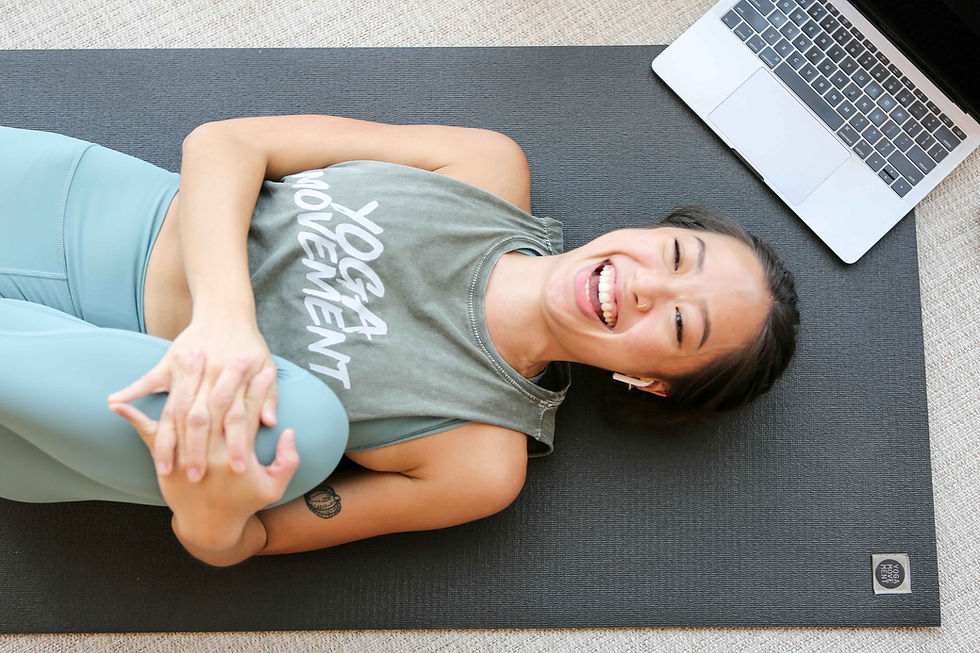In Part I of Healthy Habits we explored ways to improve our relationship with food to be happier, and of course, physically and mentally healthier. In this instalment of Healthy Habits we take the same approach with our relationship with fitness. Exercising has so many more benefits than just weight loss and looking a certain way – moving our bodies helps us feel much more grounded, energised, and even happier!
With our increasingly sedentary lifestyle (no thanks to work-from-home arrangements this pandemic), we are often caught up in our heads and detached from our own bodies. We miss out on the many benefits that movement bring to our bodies and minds. So if you're looking to integrate fitness into your life in a genuine way, this one's for you.
1. find your why and cultivate it


Finding a why is so important in building a sustainable, consistent habit. It is your reason for staying disciplined even when things get tough, when motivation has run out. So ask yourself this: why do you feel the need to work out? In our culture of instant gratification and curated "fitspo"content on social media, we're conditioned to be largely driven by guilt and our aim may be to burn calories and look a certain way. We may feel pressured to take up high intensity workouts or push ourselves at the gym more than we need to, for maximum effect. We end up burning out and not wanting to work out again so soon...and the cycle goes on and on.
Here are some possible reasons to work out:
To improve posture (e.g. back strengthening to reduce hunching, mindful walking to work on flat-footedness). See Ain Hassan and MoveU for simple exercises to train yourself to move better and safer.
To improve daily functioning (e.g. stronger or more flexible).
To supplement another sport or hobby (e.g. running to improve stamina when playing weekly football).
To age well by keeping muscles active, maintaining mobility, reducing risk of heart disease and cognitive deterioration.
For fun (e.g. walking or cycling a scenic route, playing badminton with family or friends).
To de-stress and clear your mind (e.g. yoga and breathing exercises to release tension in the body, kickboxing for the catharsis).
To learn something new. Bonus: when you learn from a friend, partner, or family, it brings you closer together!
To fall asleep better (e.g. tiring out your body by the end of the day, gentle stretching to unwind)
Know that your why is also likely to develop over time as you try out different workouts, and that's okay.
You can hear more about "discipline over motivation" from Personal Trainer and Movement Coach, Bronson Chan, on his podcast All Grit No Slack here.
2. Count the little things

To solidify a habit, it's important to experience some form of intrinsic reward each time we repeat the activity. Unfortunately seeing visible results is not a very reliable reward. Have you ever checked your reflection for abs right after working out, only to be disappointed? Changes to our physical appearance take at least weeks – perhaps too imperceptibly slowly. Instead, try noticing other little rewards that come with every workout.
Next time you get your body moving mentally take note of how you feel after – do you feel a little lighter (emotionally)? Refreshed? Energetic? Relieved? Fulfilled? Has your posture changed? Is your mind a little clearer? – even better if you physically take note in a journal or on your phone.
Photo credit: Pinterest
3. Treat workouts like dates

Just like finding a life partner, there is no universally perfect workout out there. The best kind of workout is the one that is the safest and most value-adding to YOUR life. And just like dating, the only way you can find what's best for you is to explore different kinds of exercises, instructors, coaches, and communities. What's more, by exposing yourself to different experiences, you're sure to learn more about yourself. It's a journey of growth – finding out your preferences, limits, potential, and connecting with your body – how exciting!
Photo credit: lululemon Singapore
4. normalise amateurism

Photo credit: Yoga Movement
We've been conditioned to think that in order to like something – whether it's cooking, sports, art – we have to be good at it. Remind yourself that everyone is at a different stage of their own journey, no less a journey we know nothing about. The flexible yogis you see in studios were once stiff, but practiced long enough to gradually be able to touch their toes more and more easily. The strong, confident gym-rats squatting more than their own weight had to first learn how to move safely without any bars or dumbbells.
Your workout of choice doesn't have to be confined to those in a gym, studio, or professional setting. Think back to younger days: as children, to play football all we needed was an empty bottle as a ball and 2 pairs of shoes as the goalposts. No coach or no specific footwear needed. Your weekly workout could be playing badminton below your flat, taking walks in the evening when the sun has dipped down, renting a public bike to cycle from errand to errand, gathering friends or family to learn a sport together.
The most important thing? Do what makes you feel good and brings goodness into your life. You'll know when you get there. And in the mean time, have fun, and don't take yourself too seriously!

Bình luận